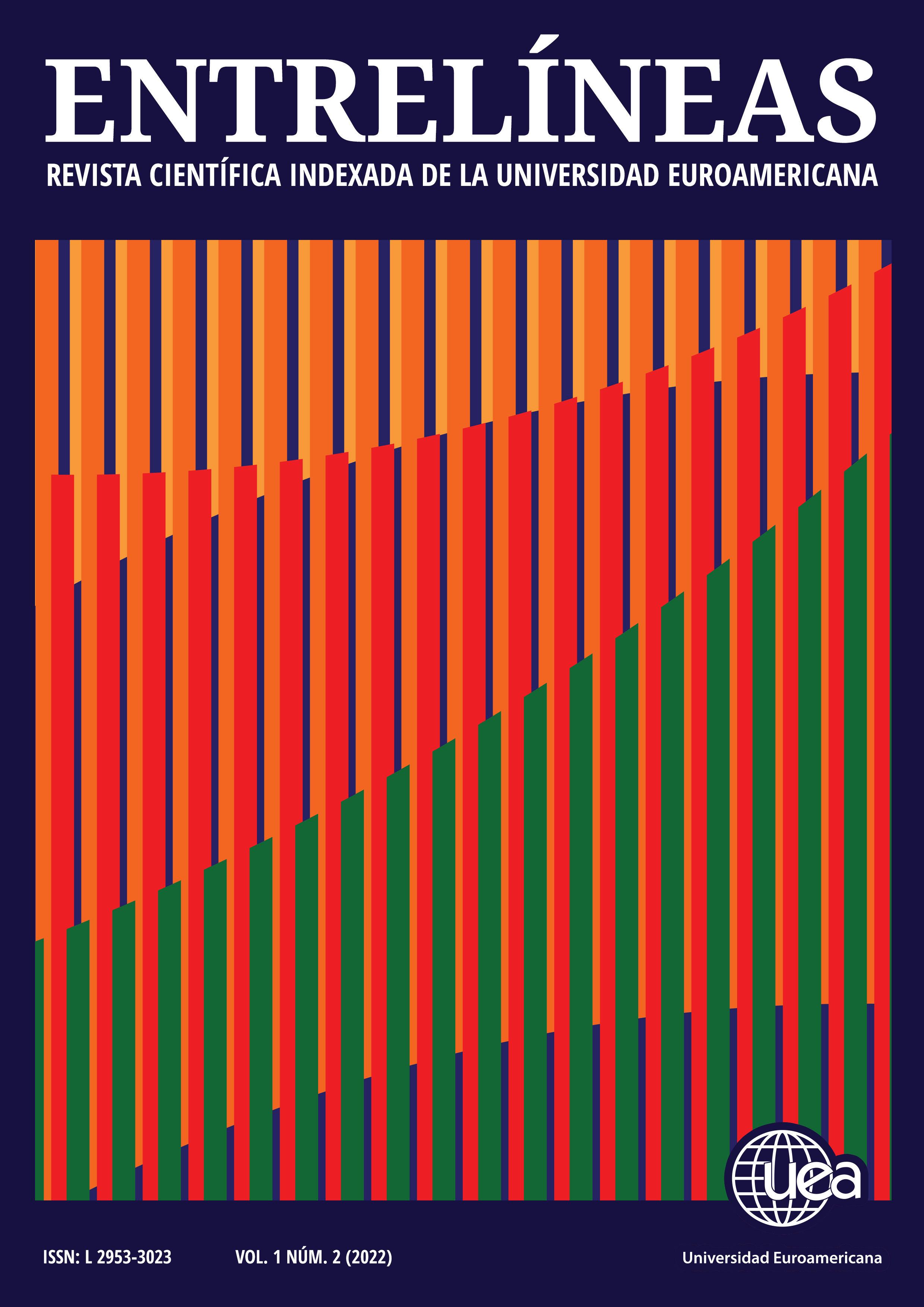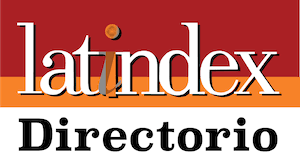Economic implications in the implementation of teleworking: an approach from the private sector employees in Panama
DOI:
https://doi.org/10.56368/Entrelineas126Keywords:
Telework, telework implementation, economic implications, private sector, PanamaAbstract
During the first semester of the year 2020, the modality of working from home became highly demanded due to the health crisis caused by COVID-19, a situation that brought with it economic implications generated because of the implementation of teleworking, both for the collaborators and for the companies, which suggests; a modification in the cost structure for both actors. This study is based specifically on the participation of employees and managers in the private sector organizations in Panama City, addressed from an interpretative phenomenological approach, with a qualitative method in accompaniment of the digital ethnography technique, because this research is conducted in a context with mobility restrictions. Likewise, it subscribes to the hermeneutic method and the analytical typology, to infer about the economic situations that emerge during the implementation of teleworking. For the collection and analysis of the data a virtual design is used, considering that the informants were outside their usual environment, henceforth, a contemporary and unieventual transactional design is applied. As a result of this research, it is concluded that teleworking has become a positive alternative, since it represents a type of saving for both companies and employees. However, some investments such as the adaptation of workspaces and the acquisition of technological tools have fallen on the collaborator, becoming an expense within their personal budget.
Downloads
References
Asesoría Técnica Parlamentaria (2020). Algunos aspectos económicos y sociales del teletrabajo: discusión internacional y caso chileno. Biblioteca del Congreso Nacional de Chile. https://obtienearchivo.bcn.cl/obtienearchivo?id=repositorio/10221/29154/1/SUP_125944_teletrabajo_aspectos_economicos_y_sociales__final.pdf
Barrios Henao Catalina (2019). Factores que determinan el éxito en la implementación del teletrabajo según teletrabajadores de una empresa de consultoría en Bogotá. Universidad EAFIT https://repository.eafit.edu.co/bitstream/handle/10784/13570/Catalina_BarriosHenao_20%209.pdf?sequence=2&isAllowed=y
Benavides, K., Prendas, G. y Benavides, Y. (2021). El teletrabajo, valoraciones de las personas trabajadoras en relación con las ventajas y desventajas, percepción de estrés y calidad de vida. Nuevo Humanismo Revista del Centro de Estudios Generales. Vol 9. No.1. https://www.revistas.una.ac.cr/index.php/nuevohumanismo/article/view/15011/21484
Castro, P., Galarza, I. y Sánchez, J. (2017). Ventajas y desventajas del teletrabajo a nivel psicosocial. [Trabajo de grado]. Universidad Cooperativa de Colombia. https://repository.ucc.edu.co/bitstream/20.500.12494/14550/1/2017_ventajas_desventajas_teletrabajo.pdf
Club de investigación Tecnológica (2013). Teletrabajo: medio ambiente, economía y calidad de vida. Club de Investigación Tecnológica. https://www.uned.ac.cr/viplan/images/teletrabajo/Teletrabajo_calidad_de_vida_economia_y_medio_ambiente.pdf
Decreto Ejecutivo Nº133 de 2020 (2020). Que reglamenta la Ley de Teletrabajo y Dicta Otras Disposiciones. Ministerio de Trabajo de la República de Panamá. https://www.gacetaoficial.gob.pa/pdfTemp/29115_A/80933.pdf?utm_source=Membresia16septiembre2020&utm_campaign=37456768eb-EMAIL_CAMPAIGN_2020_09_17_08_05&utm_medium=email&utm_term=0_a0583e1721-37456768eb-389860634
Grondin, S. (2016). Psychology of Perception. Springer International Publishing. https://www.springer.com/gp/book/9783319317892
Hurtado de Barrera, J. (2015). Clima científico institucional y producción científica en las universidades: Hacia el desarrollo de una teoría. International Linfelong learning University.
Martínez Miguélez, M. (2013). Nuevos paradigmas en la investigación. Editorial Alfa.
Ministerio de Trabajo y Asuntos Sociales España. https://www.insst.es/documents/94886/326962/ntp_412.pdf/420efc83-3075-4dd7-a571-07627688d416
OIT (2020) El teletrabajo durante la pandemia de COVID-19-Guía práctica. Organización Internacional del Trabajo. https://www.oitcinterfor.org/sites/default/files/file_publicacion/teletrabajo_oit.pdf
Olivares, G. (2020). Guía de implementación de teletrabajo. Proyecto SUSESO estudio de las condiciones de trabajo, normativa vigente y aspectos científico técnicos relevantes del Teletrabajo en empresas chilenas afiliadas al Organismo Administrador de la Ley 16.744 para el desarrollo de modelo de implementación de teletrabajo. Universidad de Medicina de Chile. Fundación Científica y Tecnológica. https://libros.uchile.cl/files/presses/1/monographs/1093/submission/proof//files/assets/common/downloads/Gu.pdf?uni=3ef0014e10b12753eb5d7e8de966bcc5
Peiró, JM. Y Soler, A. (2020) El impulso al teletrabajo durante el COVID-19 y los retos que plantea. Instituto Valenciano de Investigaciones Económicas y Universitat de Valencia. https://www.ivie.es/wp-content/uploads/2020/05/11.Covid19IvieExpress.El-impulso-al-teletrabajo-durante-el-COVID-19-y-los-retos-que-plantea.pdf
Pérez, J., Figueroa, T. y Nogareda, Cl. (1999). NTP 412: Teletrabajo, criterios para su implantación. Nota técnica del Centro Nacional de Condiciones de Trabajo.
Price WaterHouse Coopers S.L. (2019). Función financiera 4.0 rediseñar las finanzas para la nueva era digital. https://www.pwc.es/es/publicaciones/financiero/assets/pwc-funcion-financiera-40-redisenar-finanzas-nueva-era-digital.pdf
Roca, R. (2017). Knowmads: Los trabajadores del futuro. LID Editorial Empresarial
Statista Research Department. (2021). México: beneficios del trabajo a distancia 2020. Statista. https://es.statista.com/estadisticas/1143172/beneficios-trabajo-distancia-segun-reclutadores-mexico/
Weller, J. (2020) La pandemia del COVID-19 y su efecto en las tendencias de los mercados laborales, documentos de proyectos (LC/TS.2020/67). Comisión Económica para América Latina y el Caribe (CEPAL). https://repositorio.cepal.org/bitstream/handle/11362/45759/1/S2000387_es.pdf
Downloads
Published
Issue
Section
License

This work is licensed under a Creative Commons Attribution-NonCommercial 4.0 International License.
You are free to:
- Share — copy and redistribute the material in any medium or format
- Adapt — remix, transform, and build upon the material
- The licensor cannot revoke these freedoms as long as you follow the license terms.
Under the following terms:
- Attribution — You must give appropriate credit , provide a link to the license, and indicate if changes were made . You may do so in any reasonable manner, but not in any way that suggests the licensor endorses you or your use.
- NonCommercial — You may not use the material for commercial purposes .
- No additional restrictions — You may not apply legal terms or technological measures that legally restrict others from doing anything the license permits.










